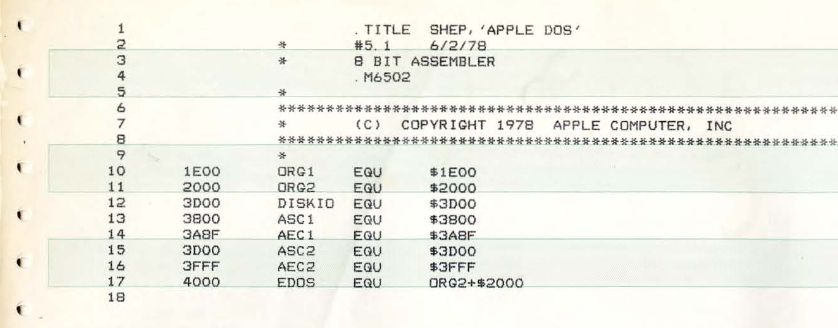Computer History Museum published the source disk source of the Apple II computer

The Computer History Museum, located in Mountain View, California, with the permission of Apple Inc., published the source code of the Apple DOS and some historical documents related to the development of this OS.
Apple II , one of the first mass personal computers, went on sale in 1977 and cost 1298 dollars. The base model had only four kilobytes of RAM, a MOS Technology 6502 processor, which worked at a frequency of one megahertz, and a graphics mode with a resolution of 280x192 pixels and six colors. In total, more than five million Apple II computers have been sold - this is Apple’s first big success.
In 1978, Apple II computers began to equip drives. The floppy controller was developed by Steve Wozniak, and for writing the OS, Steve Jobs hired an expert from outside - Paul Loughton from Shepardson Microsystems. Work on Apple DOS 3.1 lasted only seven weeks. The contract amount was 13,000 dollars. The system included a file manager, a BASIC interpreter and a basic set of utilities. Apple DOS was very advanced for its time - file names could contain up to 30 any characters. OS teams were integrated into the BASIC interpreter - a standard PC solution of that time. The files were strictly typed - several file types with a rigidly defined structure were supported, and it was impossible to change the type of the file once created.
')
The sources are published both as scans of the original printouts of the assembler code, and in a newly typed text form, however, according to the museum staff, the text version may contain typos. In addition to the source, some specifications and schemes related to the Apple II disk subsystem are published, a low-level I / O code written by Steve Wozniak and Randy Wigginton, one of the first Apple employees, scanned the OS contract between Apple and Shepardson Microsystems and a transcript of one of the meetings between representatives of these companies, where current issues of system development were discussed.
Source: https://habr.com/ru/post/201974/
All Articles